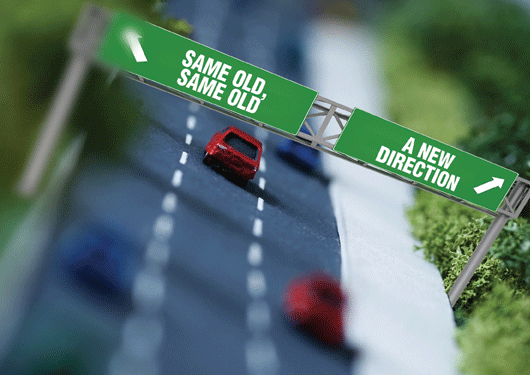
Home » The Nasty Questions to Answer in Your Next Location Plan
The Nasty Questions to Answer in Your Next Location Plan

March 3, 2014
Be sure to ask the nasty questions Look at the total picture, from the vision of perfection to taking care of next week's shipments. What are your demand patterns: volumes by season, by product characteristics, by material handling requirements, by required cycle time, by every variable? Where do you expect to be in terms of these measures in six months, in two years, in five years? What degree of confidence do you place on those estimates?
Where are you now? Recognize old baggage and attached attitudes, plus the realities of precedence: prior location, critical customers and suppliers, employees (and their trainability), site selection, site variables, local codes, economics, and business practices, local politics, utilities, supplier and customer preferences, planned technology, supplier preferences, tempered by all the unknowns that inevitably pop up. Where are your customers now? They are used to what you're doing currently.
Now, bridge carefully to the future! What are you trying to accomplish? What level of flexibility/agility is needed? Model your costs, revenues and technologies, but use that information only as a general guide.
What order cycle time are you dealing with? What is the range of size of orders? What are the physical characteristics of what you are selling? What technology is appropriate? What does best practice look like for a facility such as yours? How flexible does the facility have to be (are you selling kayaks in summer and ping-pong balls in winter?). How will customers relate to your revised ways of serving them? Where are your current rough edges? How will they improve after the new facility is completed? What could be the hidden expenses, technology glitches, layout hiccups, labor problems, facility limitations, unplanned combination of facilities after acquisition or merger or evolving desire to cut costs?
How close to the cutting edge are you willing to go? If a new concept is being proposed (at least new to you), have you seen that concept in operation somewhere else? How much experience do the engineers - that you are considering - have in doing each piece exactly as it is being proposed? Be sure to see examples of working locations demonstrated in action.
Which other facility in your company is most similar to what is being considered? What works best and what needs to be rethought? What lessons have been learned that can help you?
What degree of uncertainty is there? After all, bricks, mortar and technology are not necessarily supportive of location and material handling changes. How do we reduce uncertainty? What lessons have been learned during prior implementations? How will the project be designed and key people assigned to assure timely implementation and start-up, on time and on budget?
The Outlook
Facility location planning is where the vision and concept go from birth through the teenage years. Hopefully, though, asking and answering the tough questions, facing and dealing with the unexpected answers, and managing and adjusting to achieve energized responses can combine to get that location plan to adulthood without having to face typical teenage chaos.
And, finally: good luck!
RELATED CONTENT
RELATED VIDEOS
KEYWORDS Facility Location & Network Design Logistics logistics & supply chain Logistics Management: Facility Location Planning Logistics Outsourcing logistics services LTL/Truckload Services Pharmaceutical/Biotech Principal Essentialist SCM Rail & Intermodal Robert Sabath site selection Supply Chain Management Technology Transportation & Distribution Transportation Management Trissential
Related Directories
Subscribe to our Daily Newsletter!
Timely, incisive articles delivered directly to your inbox.
Popular Stories

2024 Supply Chain Management Resource Guide: There's Only One Way Off a Burning Platform
VIEW THE LATEST ISSUECase Studies
-
Recycled Tagging Fasteners: Small Changes Make a Big Impact
-

Enhancing High-Value Electronics Shipment Security with Tive's Real-Time Tracking
-

Moving Robots Site-to-Site
-
JLL Finds Perfect Warehouse Location, Leading to $15M Grant for Startup
-
Robots Speed Fulfillment to Help Apparel Company Scale for Growth



